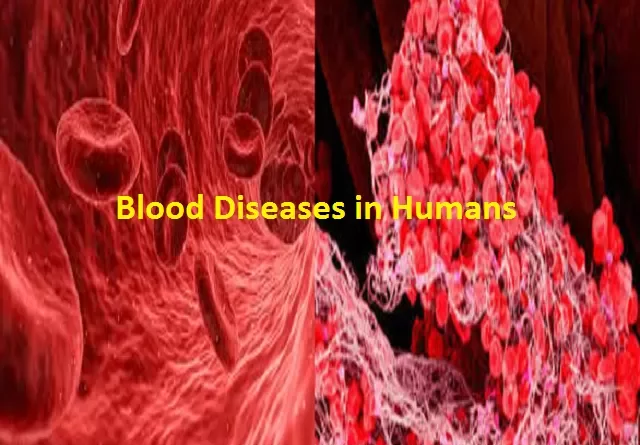Understanding Blood Diseases: A Comprehensive Guide
Blood diseases, although often overshadowed by other medical conditions, play a crucial role in our overall health. In this 2000-word article, we will delve into the intricate world of blood diseases, from their types and causes to common symptoms and treatment options. So, let’s embark on this journey to uncover the mysteries of our circulatory system and the ailments that can affect it.
Table of Contents
- Introduction
- Types of Blood Diseases
- Hematological Disorders
- Anemia
- Leukemia
- Thrombosis
- Causes of Blood Diseases
- Symptoms to Watch For
- Diagnosis and Blood Tests
- Treatment Options
- Medications
- Blood Transfusions
- Bone Marrow Transplant
- Preventing Blood Diseases
- Living with a Blood Disease
- Support and Resources
- Research and Advancements
- The Impact of Genetics
- Blood Diseases in Children
- Blood Diseases vs. Blood Disorders
- Public Awareness and Education
- Conclusion
Introduction
Our blood is often referred to as the river of life, circulating through our bodies, delivering essential nutrients, and removing waste products. However, when this vital system encounters problems, it can lead to various blood diseases. In this article, we will explore the diverse spectrum of diseases and provide insights into their diagnosis, treatment, and prevention.
Types of Blood Diseases
Hematological Disorders
Hematological disorders encompass a wide range of conditions that affect the blood and its components. These can include abnormalities in red blood cells, white blood cells, platelets, and plasma. Conditions like polycythemia and myelodysplastic syndrome fall into this category, often requiring specialized treatment and monitoring.
Anemia
Anemia is one of the most common blood disorders, characterized by a reduced number of red blood cells or low hemoglobin levels. This leads to fatigue, weakness, and pale skin. Causes of anemia can vary from nutritional deficiencies to chronic diseases, and treatment options aim to address the underlying issue.
Leukemia
Leukemia is a type of cancer that primarily affects the white blood cells. It results in an overproduction of abnormal white blood cells, crowding out healthy ones. Leukemia can be acute or chronic, and treatment typically involves chemotherapy, radiation therapy, or stem cell transplantation.
Thrombosis
Thrombosis refers to the formation of blood clots within blood vessels. While blood clots are essential for wound healing, excessive clotting can lead to serious conditions such as deep vein thrombosis and pulmonary embolism. Anticoagulant medications and lifestyle changes are often used to manage thrombosis.
Causes of Blood Diseases
Blood diseases can have various causes, including genetic factors, lifestyle choices, and underlying medical conditions. Understanding the root cause is essential for effective treatment and prevention.
Symptoms to Watch For
Recognizing the symptoms of diseases is crucial for early diagnosis and intervention. Common signs may include fatigue, shortness of breath, unexplained bruising, and frequent infections. If you or a loved one experience these symptoms, consult a healthcare professional promptly.
Diagnosis and Blood Tests
Diagnosing blood diseases often involves a series of blood tests, including complete blood counts (CBC), coagulation tests, and genetic testing. These tests help healthcare providers identify the specific type of blood disease and its severity.
Treatment Options
Treatment for these diseases varies depending on the type and severity of the condition. Options may range from medication and blood transfusions to more advanced interventions like bone marrow transplantation. visit doctorhubert.com for medical treatment
Medications
Many blood diseases can be managed with medications that either stimulate or suppress certain blood cell production. These drugs aim to restore balance within the blood.
Blood Transfusions
Blood transfusions are a common treatment for conditions like anemia or severe bleeding disorders. Donated blood is carefully matched to the patient’s blood type to ensure compatibility.
Bone Marrow Transplant
In cases of severe diseases, a bone marrow transplant may be necessary. This procedure involves replacing damaged or malfunctioning bone marrow with healthy donor marrow.
Preventing Blood Diseases
While some of these diseases have genetic origins, others can be prevented or managed through lifestyle modifications. Maintaining a balanced diet, regular exercise, and avoiding tobacco and excessive alcohol consumption can contribute to better blood health.
Living with a Blood Disease
Living with a this disease can be challenging, but with proper medical care and support, individuals can lead fulfilling lives. Support groups and counseling can also help patients and their families cope with the emotional aspects of these conditions.
Support and Resources
Accessing information and support networks is essential for individuals with these diseases. Numerous organizations and online communities offer valuable resources and a sense of community for patients and their loved ones.
Research and Advancements
Ongoing research in the field of hematology continues to advance our understanding of blood diseases. New treatments and therapies are constantly emerging, offering hope to those affected by these conditions.
The Impact of Genetics
Genetics plays a significant role in the development of certain these diseases. Understanding one’s genetic predisposition can aid in early detection and prevention.
Blood Diseases in Children
These diseases can affect individuals of all ages, including children. Pediatric hematologists specialize in diagnosing and treating blood disorders in young patients.
Blood Diseases vs. Blood Disorders
It’s essential to distinguish between blood diseases and blood disorders. While diseases often involve pathological changes, disorders may refer to conditions with abnormal but non-disease-related characteristics.
Public Awareness and Education
Increasing public awareness about diseases is crucial for early diagnosis and support. Educational campaigns and regular blood donations can save lives.
Conclusion
In conclusion, these diseases encompass a wide spectrum of conditions that affect the vital circulatory system. Early diagnosis, appropriate treatment, and lifestyle adjustments can make a significant difference in managing these diseases. Remember that knowledge is power, and staying informed about these diseases can lead to better health outcomes.
FAQs (Frequently Asked Questions)
- What are the common symptoms of anemia?
- Common symptoms of anemia include fatigue, weakness, pale skin, and shortness of breath.
- How can I prevent blood diseases through lifestyle changes?
- Lifestyle changes such as a balanced diet, regular exercise, and avoiding tobacco and excessive alcohol consumption can contribute to better blood health.
- What is the difference between acute and chronic leukemia?
- Acute leukemia progresses rapidly and requires immediate treatment, while chronic leukemia progresses more slowly and may not require immediate intervention.
- Are there support groups for individuals with blood diseases?
- Yes, many support groups and online communities provide resources and emotional support for individuals and their families dealing with blood diseases.
- Why is public awareness about blood diseases important?
- Public awareness can lead to early diagnosis, increased research funding, and a sense of community and support for those affected by blood diseases.
Also, Read about: Understanding Communicable Diseases: A Comprehensive Guide



